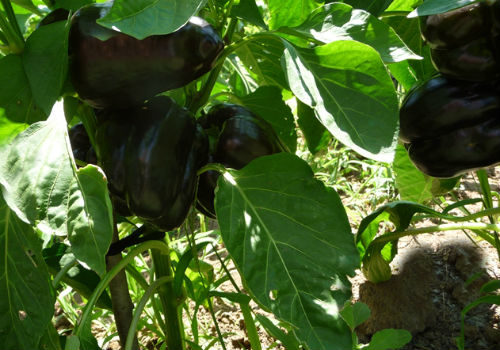 Many Russian gardeners prefer the cultivation of sweet pepper. Every year, thanks to the efforts of breeders, new varieties appear. Cardinal pepper, which is characterized by high yield and disease resistance, is well-deserved.
Many Russian gardeners prefer the cultivation of sweet pepper. Every year, thanks to the efforts of breeders, new varieties appear. Cardinal pepper, which is characterized by high yield and disease resistance, is well-deserved.
Content
General characteristics of the variety
Cardinal belongs to early ripening varieties. The plant reaches a height of 1 m. A distinctive feature of the pepper is the presence of large purple fruits resembling a cube. Each weight is about 250 g.
If you strictly adhere to the recommendations regarding cultivation technology, from 1 m2 will be able to collect up to 14 kg. The technical maturity of pepper occurs in 80-90 days.
Varieties are cultivated in many regions of Russia. In particular, the vegetable came from soul-makers living in the suburbs and in Siberia. The ubiquity of the Cardinal proves once again that it has many advantages over other types of peppers.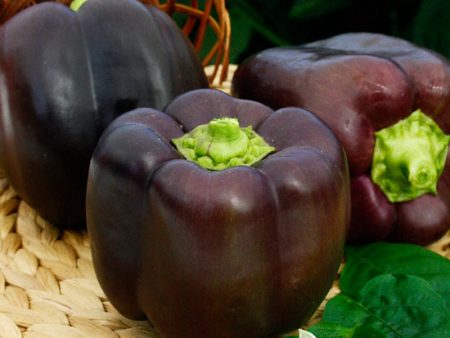
Growing Features
Vegetables are grown in two ways - seedlings and seedlings. To harvest pepper, the first method is used. Since the vegetation period of the Cardinal lasts 200 days, planting material is sown in February (in the second half).
The following conditions must be observed:
- Boxes are best filled with ready-made substrate.
- The depth of the holes for seeds is a maximum of 2 cm.
- Seeds germinate well at 28 degrees Celsius. When the first shoots appear, the temperature is lowered to +20.
- A plant cannot grow without light. Therefore, you should take care of lighting for 14 hours a day. If necessary, fluorescent lamps are installed.
- After 20 days, pepper is planted in different containers, while weak specimens are thrown out.
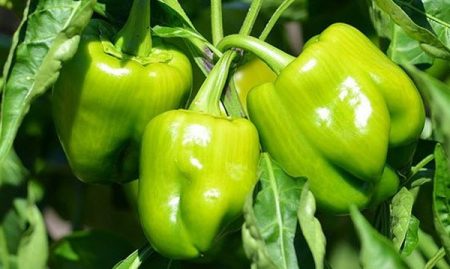
Planting seedlings on the site
The culture will take root normally and give a great harvest if the place for it is chosen correctly. Pepper grows best in those areas that were previously occupied:
- cabbage;
- cucumbers;
- pumpkin;
- zucchini;
- carrots;
- onions.
Attention: after tomato, eggplant, potatoes and other varieties of pepper, this variety will not grow normally.
Sandy or sandy loamy soil is suitable for the Cardinal. First you need to carry out its disinfection using a special solution: copper sulfate (20 g) is diluted in a bucket of water. The procedure is performed 5 days before the pepper is planted.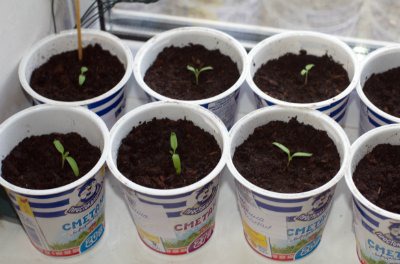
The ideal time for landing is the last days of May. The land allotted for culture must be dug up and fertilized. The depth of the holes is also not more than 2 cm.
Competent Care Rules
It is impossible to get a rich harvest of pepper without caring for a plant, which provides for the implementation of certain rules:
- The cardinal will develop normally at a temperature of + 20-25. At indicators less than +13, the plant must be covered.
- In a week, pepper is watered 1 time before the appearance of flowers, twice in heat and 3 times during flowering and fruit formation. For irrigation should be stocked with rain or standing water.
- Top dressing during flowering is carried out by a special composition.To do this, you will need herbs (dandelion, plantain, nettle, coltsfoot, wood lice), which are mixed with manure (10 l) and ash (200 g).
- It is important to clean weeds on time and loosen the ground.
- So that the bushes do not break due to the severity of the fruits, they must be tied.
- The cardinal does not tolerate drafts, so it is advisable to plant areas next to it with tall plants.
- Despite the fact that the variety is capable of self-pollination, for a good harvest, the plant will need to be pollinated additionally. Without this, the fruits may be deformed.
Advantages and Weaknesses
The Cardinal's demand is due to the presence of a number of advantages. He has: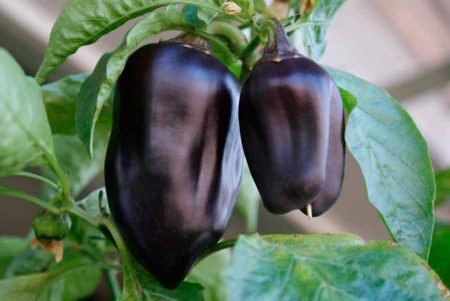
- high yields;
- excellent taste;
- resistance to many diseases.
It should be noted that the Cardinal is suitable for use in both fresh and canned form.
Darkening of a vegetable during canning is considered its main drawback.
Winter Storage Tips
To keep the crop as long as possible, it should be allocated a place in the pantry, cellar or refrigerator. Storage Humidity - Maximum 90%. Periodically, the product is checked for rotten fruit, which must be disposed of.
Other options:
- drying;
- freezing
- canning.
In frozen form, pepper practically does not lose its taste and can be stored in the freezer compartment throughout the winter period.
Gardeners reviews
In various forums devoted to growing crops, there are often positive reviews about the Cardinal. Many note the pleasant taste of the vegetable. Mistresses are happy to add pepper to salads or bake whole in the oven.
The variety attracts with voluminous fruits and a thick wall. Gardeners also pay attention to the rapid growth of the crop and an excellent harvest.
Cardinal - a fairly unpretentious variety. However, to obtain the desired results, the plant should be properly looked after, not ignoring the advice of professionals.




 Calorie pepper stuffed with meat and rice - BZHU per 100 grams
Calorie pepper stuffed with meat and rice - BZHU per 100 grams Gorky pepper - the best varieties for open ground
Gorky pepper - the best varieties for open ground Hot pepper seeds - the best varieties for open ground and reviews
Hot pepper seeds - the best varieties for open ground and reviews Capsicum tincture for hair - how to use and reviews
Capsicum tincture for hair - how to use and reviews